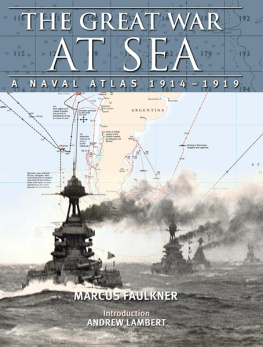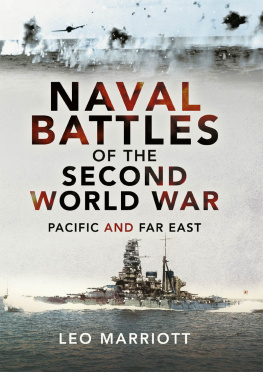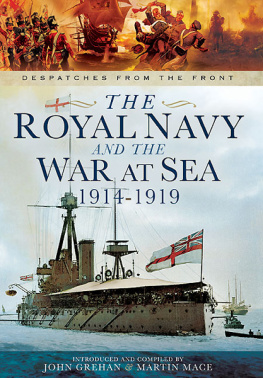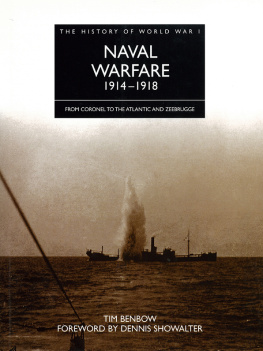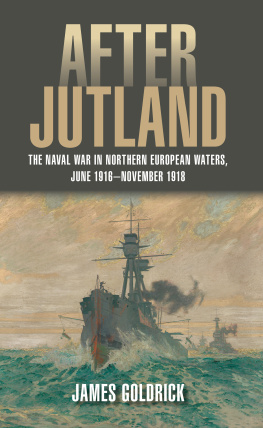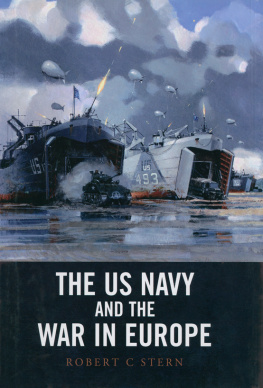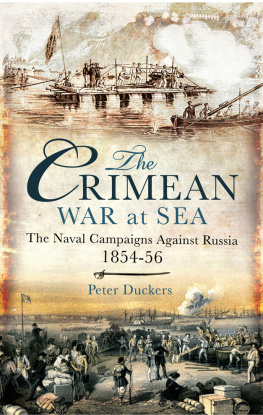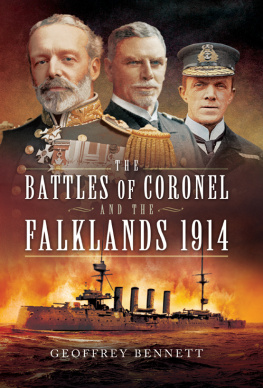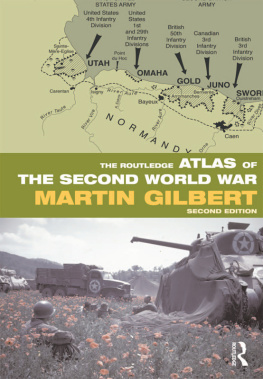TITLE PAGE: Merchant ships in dazzle camouflage schemes during the First World War, painted in 1918 by Herbert Everett. ( National Maritime Museum, Greenwich, London, BHC0668)
Text copyright Marcus Faulkner 2015
Maps copyright Seaforth Publishing 2015
First published in Great Britain in 2015 by
Seaforth Publishing,
Pen & Sword Books Ltd,
47 Church Street,
Barnsley S70 2AS
www.seaforthpublishing.com
British Library Cataloguing in Publication Data
A catalogue record for this book is available from the British Library
ISBN: 978 1 84832 183 0
PDF ISBN: 978 1 84832 363 6
EPUB ISBN: 978 1 84832 362 9
PRC ISBN: 978 1 84832 361 2
All rights reserved. No part of this publication may be reproduced or transmitted in any form or by any means, electronic or mechanical, including photocopying, recording, or any information storage and retrieval system, without prior permission in writing of both the copyright owner and the above publisher.
The right of Marcus Faulkner to be identified as the author of this work has been asserted by him in accordance with the Copyright, Designs and Patents Act 1988.
Cartography, design and layouts by Peter Wilkinson, Charlbury, Oxford
Printed and bound in China by Imago
PREFACE
THE GREAT WAR was a genuinely global conflict from the outset. By the time Britain declared war on Germany on 4 August 1915, thus becoming the last European great power to enter the conflict, naval operations were underway in all of the major oceans. Although the assassination of Archduke Franz Ferdinand of Austria and his wife in Sarajevo on 28 June was the catalyst for war, some of the root causes may be traced back to maritime concerns. A naval arms race, economic competition and overseas colonial possessions were all contributory factors and ones in which the control and use of the worlds oceans was central.
Naval events certainly form part of the conflicts core narrative; the battles of Jutland and Heligoland Bight, along with the U-boat campaign, are key events and feature along with Verdun or the Somme in any overviews of the war. Those familiar with the war will be aware of Vizeadmiral von Spees exploits in the Pacific and his ultimate defeat at the Battle of the Falklands in December 1914. The Dardanelles campaign in 1915 also offers another example many will be familiar with, principally because of the failure to force the strait by naval means alone led to the campaign itself. Beyond these, however, knowledge of the events at sea and evolution of naval operations recedes significantly. Secondary theatres like the Baltic or Black Sea receive almost no attention and even the U-boat campaign is often portrayed through the lens of the Battle of the Atlantic in the Second World War rather than the more complex and destructive campaign that was waged between 1914 and 1918.
In a war of unprecedented scale, fought by vast armies inflicting horrendous casualties upon each other, the seeming lack of visible naval action has affected how the war at sea is remembered and portrayed. When battle and destruction are the measure the naval war compares poorly with that on land. The outcome of the Battle of Jutland did not fulfil wider expectations even if its impact was crucial to the eventual allied victory. The focus on naval battles misunderstands the nature of the naval war and its role in the conflict. Decisive naval battles are rare throughout history while blockades, trade defence, minelaying operations, coastal bombardments and landings are overlooked. All these were features of the Great War.
A comprehensive atlas offers an ideal way of understanding not only the evolution of naval operations, but also the interaction between theatres of war and the strategic impact the sea had on the wider conflict. The war took place at a time of great change with many new technologies in their infancy. Mines, torpedoes, long-range gunnery, submarines, diesel engines, wireless communication, oil-fired capital ships, aviation and more were reaching a degree of maturity or coming into service. All affected naval operations and together fundamentally altered the way in which fleets operated. In addition, the absence of major conflict in the previous decades meant that commanders lacked the experience of war, the skills in handling fleets and a full understanding of the implications of the new developments.
Admirals had to learn how to adapt to the new conditions as much as generals had to learn to wage a new type of industrial war. The North Sea theatre demonstrates this well and the sequence of maps shows clearly and concisely how British and German operations evolved. The result was an increasingly complex and constrained battle space. Many of the operations and engagements during the war are simply too complex to understand without a visual aid. The same may be said of the mechanics of the U-boat campaign.
In a conflict full of complexity this book is designed to bring clarity while not compromising important details and developments. All major events are covered along with a representative overview of types of naval operations and events in the secondary theatres. It is organised in a chronological manner but certain theatre and campaign overviews break the pattern. Each map is designed to be as self-contained as possible.
A general convention underpins the composition of the atlas although on occasion this is adapted for ease of reference. The use of ship symbols has been streamlined to show general ship types as sheer range of types at the time and different national designations would make a more specific system unwieldy. Time has been harmonised to the British account apart from a few cases where there was no British involvement and local time has been adopted. The names of the senior most commanders are given in full while those of subordinates are cut down. Royal and noble ranks are largely omitted. Naval affiliations are omitted unless a commander was neither British nor German or his origin cannot be inferred from the context. Most terms are translated into English for ease although the key German ones are given at the outset for completion. German ranks are retained.
Acknowledgements
In the aftermath of the publication of War at Sea a number of people, to long to list, got in touch to offer critique, provide suggestions or simply inspiration to carry on with this endeavour. Nonetheless, I must thank a few people specifically who have provided support during the course of compiling The Great War at Sea. My colleagues Alessio Patalano and Jeffrey Michaels always provide encouragement and perspective. Richard Dunley has been the source of many interesting conversations over the past years. Len Barnett not only answered many specific questions, but also came to assistance with source materials I was unable to obtain. Andrew Lambert provides sage guidance and particularly so in the case of this project. He also allowed me to raid his library on numerous occasions and borrow certain materials on very long-term loan. At Seaforth Publishing Julian Mannering has continued to provide direction and shown remarkable patience in the face of what was another substantial project. Once again, though, special thanks must go to Peter Wilkinson without whom this book simply would not have been possible.
Marcus Faulkner
London, June 2015
CONTENTS
THE GREAT WAR AT SEA
Navies, sea power and great power politics
The naval balance in August 1914 suggested that the possession of a great fleet of costly warships would secure important strategic goals, goals appropriate to the proud names they carried. Around 1890 a fleet of capital ships, cruisers and torpedo craft had been an essential symbol of great power in an unstable world, propelled by imperialism and Social Darwinism towards ever larger empires. Having run out of distant territory to seize, the major powers began appropriating the portfolios of waning imperial states. In the Spanish-American War of 1898 a rising nation used naval might to seize the empire of a weak, moribund rival, with barely a scrap of justification. The equally ambitious Germans arrived too late. The argument that a big battlefleet was the key to world power had been made by American strategist Captain Alfred Thayer Mahan USN in his 1890 bestseller,
Next page
